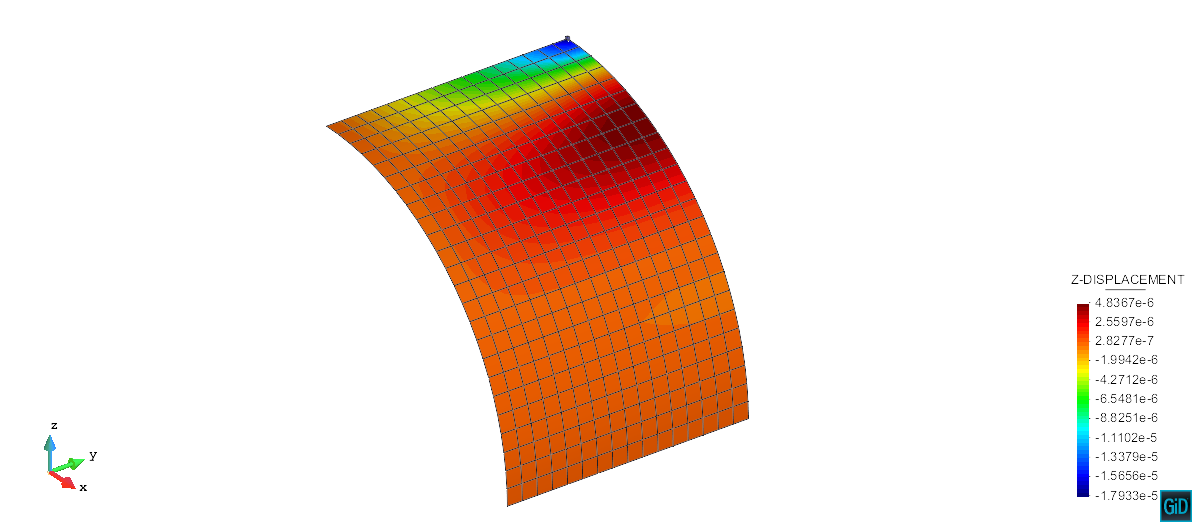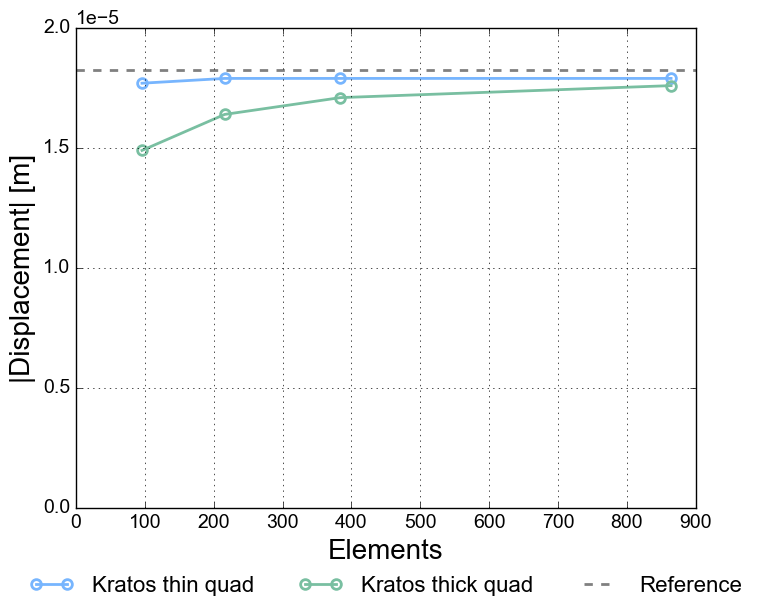Problem definition
The linear static pinched cylinder test considers a cylindrical shell fixed by rigid diaphragms at it’s axial ends. The loading consists of two opposing compressive point loads at the center of the shell. Isotropic material properties are as per the figure below. Due to symmetry only an eighth of the shell is modeled.
Problem definition [2]
The key result is the vertical displacement under the point load, denoted by “u” in the diagram above, for which the reference value is u_z = 1.8248E-5 [2].
Results
The following Z-displacement contour of the Kratos thin quad element (mesh = 384 elements) is provided for context.

Pinched cylinder results: Z-displacement contour of Kratos thin quad element
The results of the test for the thin and thick triangle Kratos shell elements are presented below.

Pinched cylinder results: triangle elements
The results of the test for the thin and thick quadrilateral Kratos shell elements are presented below.

Pinched cylinder results: quadrilateral elements
Both graphs above indicate all Kratos triangular and quadrilateral shell elements agree with the reference solution.
References
- Ted Belytschko et al. “Stress projection for membrane and shear locking in shell finite elements”. In: Computer Methods in Applied Mechanics and Engineering 51.1-3 (1985), pp. 221–258.
- Robin Bouclier, Thomas Elguedj, and Alain Combescure. “Efficient isogeometric NURBS-based solid-shell elements: Mixed formulation and method”. In: Computer Methods in Applied Mechanics and Engineering 267 (2013), pp. 86 –110.